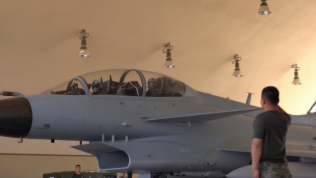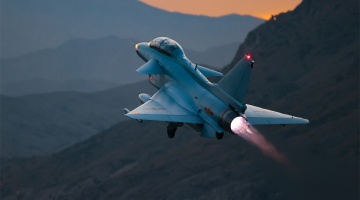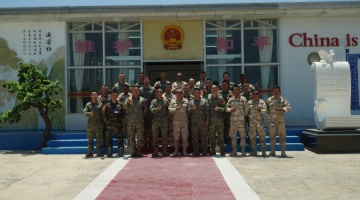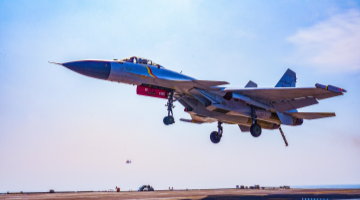By Guo Yuandan
On January 31, a US F-16 fighter crashed into the sea near the west coast of the ROK, and the pilot was rescued after ejecting. On December 11, 2023, a US F-16 fighter crashed during routine training in the ROK. In May 2023, a US F-16 fighter crashed during routine training in an agricultural district south of Seoul. Military experts hold that the frequent accidents of US fighters are a result of four factors, including the excessively long service time and improper maintenance of the fighter.
The United States Forces Korea (USFK) has been experiencing continuous F-16 fighter accidents, which are just a small representation of the recent frequent string of US military aircraft accidents worldwide. On January 4, a B-1B strategic bomber from the US Air Force crashed while landing at Ellsworth Air Force Base in South Dakota, and all four crew members on board ejected safely.
According to public reports, there were a total of three aircraft crashes involving the US military in November 2023. On November 29, 2023, a CV-22 Osprey transport aircraft assigned to the US Yokota Air Base in Tokyo, crashed, resulting in the loss of all eight individuals on board. Promptly, the Pentagon issued a complete halt to the operation of this significant and controversial aircraft. On November 20, 2023, a US Navy P-8A anti-submarine patrol aircraft overshot the runway and eventually landed in shallow water at Kaneohe Bay, Hawaii, causing minor injuries to nine people. In November 2023, the US European Command released information stating that a US military aircraft crashed in the Mediterranean Sea during a training flight on November 10.
According to military expert Zhang Junshe, there are four major reasons for the recent accidents of US aircraft. First, some US fighters have been in service for too long and their maintenance is inadequate, thus leading to accidents. For instance, the B-1B strategic bomber entered service in 1986 and has been in service for nearly 40-year. "In recent years, the US military has consistently complained about the reduction of maintenance personnel, which has made equipment maintenance issues very prominent."
Zhang Junshe believes that although the US military aircraft extensively utilize new technologies, certain models possess inherent design flaws, which is the second reason for the high occurrence of US aircraft accidents. "The most typical aircraft is the Osprey, which combines the advantages of helicopters and fixed-wing aircraft in its design. Nevertheless, due to the adoption of numerous new technologies, its stability and safety are inadequate." In recent years, the Osprey has encountered accidents in Japan, the ROK, and Australia. For instance, on August 27, 2023, a V-22 Osprey crashed in the Tiwi Islands, north of Darwin, Australia.
The third reason is the inadequate training of US aircrew. According to Zhang Junshe, in recent years, various branches of the US military have reduced the training time for pilots. US military analysts believe that some accidents are caused by insufficient training and inadequate skill level of pilots.
The fourth reason lies in the high-tempo, high-intensity combat readiness operations that led to frequent accidents. In analyzing US military aircraft accidents, US military experts also consider this to be a crucial factor, and indeed it is. Zhang Junshe emphasized that the US military acts as a "world policeman" all year round, undertaking fast-paced and high-intensity combat readiness missions, showcasing strength and provoking conflicts. Such a move of the US results in heightened stress and exhaustion for US troops, as if they are reaching a "breaking point". Moreover, aircraft-related factors have contributed to the continuous occurrence of accidents.
Editor's note: Originally published on huanqiu.com, this article is translated from Chinese into English and edited by the China Military Online. The information and opinions in this article do not necessarily reflect the views of eng.chinamil.com.cn.









